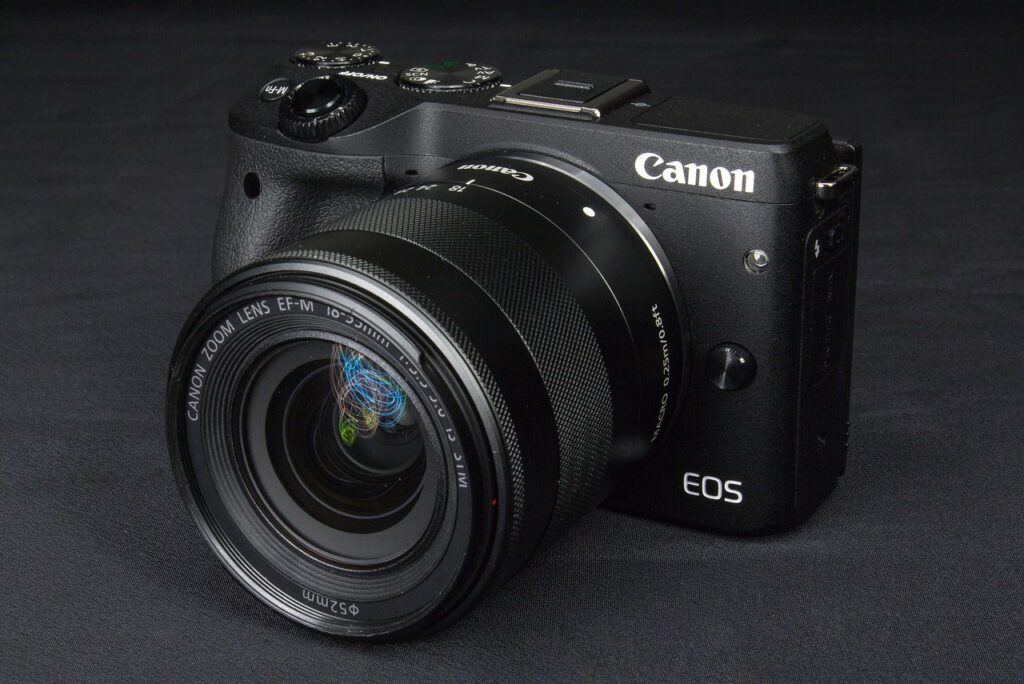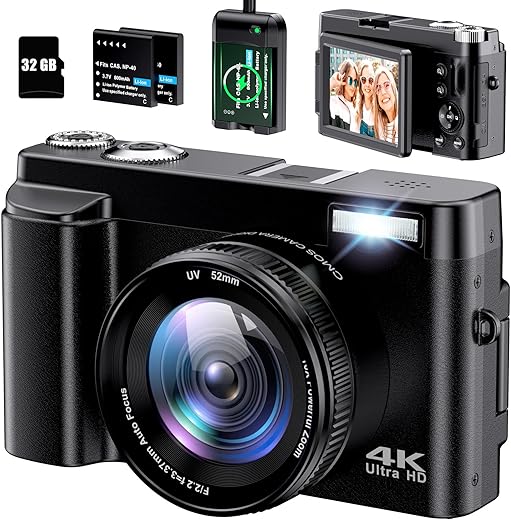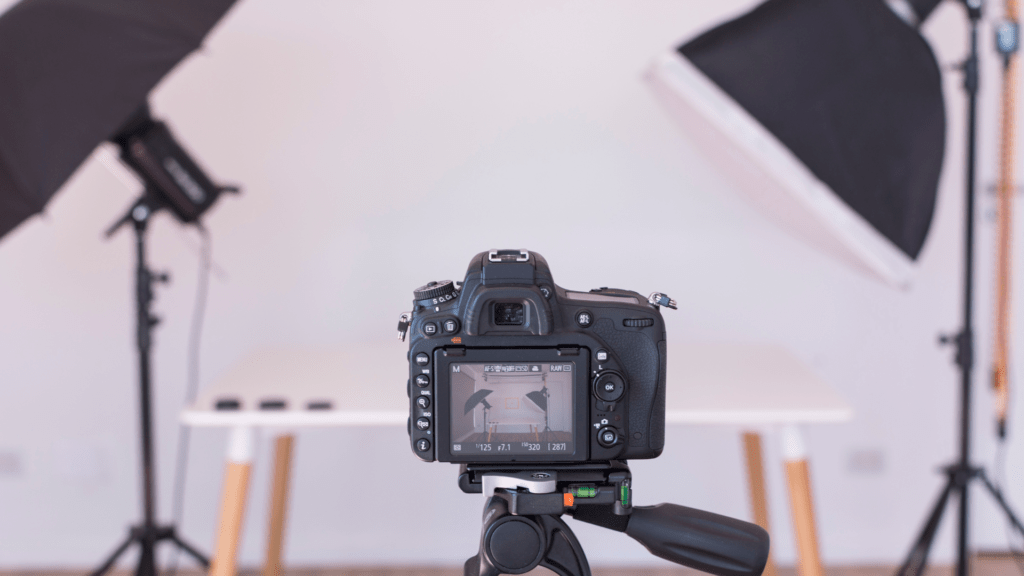As a passionate photographer, I understand the challenges and emotions that come with transitioning from a trusted DSLR to a mirrorless camera system. With the rapid advancement of technology, mirrorless cameras have gained immense popularity among photographers of all skill levels, offering a range of advantages that can enhance our creative endeavors. In this post, I will guide you through the key steps and considerations for making this switch, addressing common concerns and showcasing the benefits of going mirrorless. Together, we’ll explore how these innovative systems can elevate your photography experience while easing your transition. Let’s embark on this journey to uncover the exciting possibilities that mirrorless cameras have to offer.
Understanding the Differences Between DSLR and Mirrorless
Choosing the right camera system can be daunting, especially with the proliferation of options available today. Two of the most popular types are Digital Single-Lens Reflex (DSLR) cameras and mirrorless cameras. Below, we explore the fundamental differences between these two systems, focusing on their mechanisms, size and weight considerations, and the benefits of their respective viewfinder technologies.
The Mechanics: Mirrors vs. No Mirrors
At the core of the difference between DSLR and mirrorless cameras lies the presence or absence of a mirror mechanism.
DSLR Cameras
- Mirror Mechanism: DSLRs utilize a mirror and prism system to reflect light from the lens up to the optical viewfinder. When you take a photo, the mirror flips up, allowing light to reach the image sensor.
- Examples: Popular DSLR systems include the Canon EOS 90D and the Nikon D7500. The D7500 offers a robust autofocus system and is particularly well-regarded for sports and wildlife photography.
Mirrorless Cameras
- No Mirror: Mirrorless cameras forego the mirror mechanism entirely. Instead, they capture images directly through an electronic sensor, which means that the light comes straight from the lens to the sensor at all times.
- Examples: Notable mirrorless models include the Sony Alpha a7 III and the Fujifilm X-T4. The a7 III is praised for its low-light performance and full-frame capabilities, while the X-T4 is recognized for its compact size and excellent video features.
Size and Weight Considerations
Due to their different internal mechanisms, DSLRs and mirrorless cameras vary significantly in size and weight.
Size Comparison
- DSLRs: Generally bulkier and heavier, DSLRs are designed to accommodate the mirror and prism system. This can make them less portable, especially for extended shooting sessions.
- Mirrorless Cameras: Typically lighter and more compact, mirrorless models are easier to carry for long periods. This makes them an appealing choice for traveling photographers or those who prioritize portability.
Weight Comparison
| Camera Type | Average Weight | Notable Models |
|---|---|---|
| DSLR | 1.5 – 2.5 lbs | Canon EOS 90D, Nikon D7500 |
| Mirrorless | 0.9 – 1.5 lbs | Sony Alpha a7 III, Fujifilm X-T4 |
Viewfinders: Optical vs. Electronic
The way photographers compose their shots differs significantly between DSLRs and mirrorless systems, primarily due to the type of viewfinder used.
Optical Viewfinders (DSLRs)
- How They Work: Optical viewfinders in DSLRs provide a real-time view through the lens using the mirror and prism system. This experience offers a natural representation of the scene, without any lag.
- Pros: Optical viewfinders excel in bright light conditions, providing a clear view without electronic interference. They are also less reliant on battery power since they don’t need to display an electronic feed.
- Example: The Canon EOS 5D Mark IV is a great example of a DSLR with a highly regarded optical viewfinder that provides an accurate depiction of the scene.
Electronic Viewfinders (Mirrorless)
- How They Work: Mirrorless cameras utilize electronic viewfinders (EVFs) that display a digital feed from the sensor. This allows photographers to see the adjustments made to exposure, white balance, and depth of field before taking the shot.
- Pros:
- Real-Time Adjustments: Photographers can see how settings will affect the image in real-time.
- Low Light Performance: EVFs can often enhance low-light visibility, making them advantageous for night photography.
- Focus Peaking: Many EVFs offer features like focus peaking, which assists in achieving critical focus, especially in manual focus scenarios.
- Example: The Fujifilm X-T4’s electronic viewfinder stands out for its high refresh rate and clarity, allowing photographers to confidently frame their shots.
Summary of Key Differences
To provide a clearer picture, here’s a summarized comparison of key aspects between DSLRs and mirrorless cameras.
| Feature | DSLR | Mirrorless |
|---|---|---|
| Mirror Mechanism | Yes (mirror and prism system) | No (direct sensor usage) |
| Size | Generally larger | Generally smaller |
| Weight | Typically heavier | Generally lighter |
| Viewfinder Type | Optical viewfinder | Electronic viewfinder |
| Battery Life | Typically longer | Generally shorter |
| Real-Time Exposure Info | No | Yes (live exposure preview) |
| Focus | Phase-detection autofocus | Contrast-detection (with some phase-detection in newer models) |
In understanding these differences, photographers can make a more informed decision that aligns with their needs, preferences, and shooting styles. Whether opting for the robust traditional feel of a DSLR or the sleek modernity of a mirrorless camera, each system offers unique advantages worth considering.
Assessing Your Photography Needs
Embarking on your photography journey requires careful consideration of your specific needs, style, and budget. As you evaluate your options, it’s crucial to ask yourself a series of questions that will help clarify what you’re truly looking for in a camera system. This will ensure you invest in equipment that aligns with your photographic goals.
Identify Your Photography Style
Determining the types of photography you engage in is a fundamental step in assessing your needs. Different styles come with varying requirements and nuances. Here are some common photography genres and the key features to consider for each:
Portrait Photography
- Camera Type: DSLR or mirrorless cameras offer excellent image quality.
- Key Features: Look for cameras with a wide aperture range (like the Canon EOS R with its RF 50mm f/1.2L lens) for stunning blurs in backgrounds.
- Examples:
- Canon EOS R
- Nikon Z6 II
Landscape Photography
- Camera Type: Full-frame or medium format cameras provide superior resolution.
- Key Features: High megapixel count (like the Sony A7R IV with its 61 MP sensor) and excellent dynamic range.
- Examples:
- Sony A7R IV
- Fujifilm GFX 100
Event and Sports Photography
- Camera Type: Fast-focusing DSLRs or mirrorless cameras with burst shooting capabilities.
- Key Features: Look for a camera with a continuous shooting mode and excellent autofocus (like the Nikon D500).
- Examples:
- Nikon D500
- Canon EOS-1D X Mark III
Macro and Close-Up Photography
- Camera Type: Any system can work, but consider macro-capable lenses.
- Key Features: A robust camera with fine detail capture (Canon EOS 90D with a Canon EF-S 60mm f/2.8 Macro lens).
- Examples:
- Canon EOS 90D
- Olympus OM-D E-M1 Mark III
Determine Your Budget
Photography equipment can vary widely in price, from entry-level setups to high-end professional rigs. Setting a budget is essential to narrow down your options effectively.
Budget Breakdown
- Entry-Level (Under $500): Suitable for beginners looking to explore photography.
- Example: Canon EOS Rebel T7
- Mid-Range ($500 – $1500): Options suitable for enthusiasts and advanced amateurs.
- Example: Nikon Z50
- Professional ($1500 and up): High-quality cameras and lenses designed for pro use.
- Example: Sony A9 II
Identify Key Features You Value
Understanding the specific features that resonate most with your style is vital for making the right decision. Here’s a checklist of common features to consider, along with product examples:
Image Quality
- Sensor Size: Larger sensors (full-frame vs. crop) typically offer better quality.
- Examples:
- Full-frame: Canon EOS R5
- Crop sensor: Nikon D7500
Portability
- Size and Weight: If you plan to travel or shoot on-location frequently, consider a lighter system.
- Examples:
- Compact: Fujifilm X-T4
- Traditional: Canon EOS 90D
Connectivity
- Wireless Features: Built-in Wi-Fi or Bluetooth can be beneficial for sharing images quickly.
- Examples:
- Sony A6400 with NFC and Bluetooth
Compare Camera Features
To facilitate your decision-making process, here’s a comparison table to outline important details about various camera systems:
| Feature | Canon EOS R | Nikon Z50 | Sony A7R IV | Fujifilm X-T4 |
|---|---|---|---|---|
| Sensor Type | Full-frame CMOS | APS-C CMOS | Full-frame Exmor R | APS-C X-Trans CMOS IV |
| Megapixels | 30.3 MP | 20.9 MP | 61 MP | 26.1 MP |
| ISO Range | 100-40,000 | 100-51,200 | 100-32,000 | 160-12,800 |
| Continuous Shooting | 8 fps | 11 fps | 10 fps | 15 fps |
| Video Capability | 4K at 30 fps | 4K at 30 fps | 4K at 30 fps | 4K at 60 fps |
| Weight | 650 g | 450 g | 665 g | 607 g |
By identifying your photography style, setting a realistic budget, and pinpointing essential features, you can make informed decisions about the camera system that best suits your needs. As you assess your options, consider these criteria carefully to ensure that your investment will facilitate your photography aspirations effectively.
Choosing the Right Mirrorless Camera
Selecting the right mirrorless camera can be an overwhelming task, especially with the plethora of options available in the market. This guide will help you navigate through the key specifications, popular brands, and practical examples to ensure you make an informed decision.
Understanding Key Specifications
When choosing a mirrorless camera, focus on these essential specifications:
Sensor Size
The sensor size plays a critical role in image quality, depth of field, and low-light performance. Here are the most common types of sensors found in mirrorless cameras:
- Full-Frame Sensors: Found in high-end models like the Sony A7 IV and Nikon Z7 II, these provide superior image quality and performance in low light.
- APS-C Sensors: Common in many mid-range options like the Fujifilm X-T4 and Canon EOS R10, APS-C sensors strike a balance between image quality and portability.
- Micro Four Thirds Sensors: Cameras like the Olympus OM-D E-M10 Mark III and Panasonic Lumix GH5 use this smaller sensor size, offering excellent portability and selection of lenses but may have limitations in low-light situations.
Autofocus Performance
Fast and accurate autofocus is crucial for capturing moving subjects. Look for the following features:
- Phase-detection vs. Contrast-detection: Phase-detection (found in models like the Sony A7R IV) is generally faster and more reliable for tracking moving subjects.
- Number of Focus Points: More focus points (e.g., Canon EOS R5 has 1,053 AF points) usually translates to better tracking and accuracy.
Battery Life
A long battery life ensures you can shoot without constantly worrying about recharging. Check for:
- CIPA Ratings: Manufacturers provide CIPA ratings, which indicate how many shots you can take on a single charge. For example, the Fujifilm X-T4 boasts an impressive rating of around 600 shots, while the Sony A6600 offers about 810 shots.
Popular Brands and Models
Several brands dominate the mirrorless camera market, each with a diverse lineup to suit different needs. Here are some of the most reputable brands and standout models:
- Sony:
- Sony A7 IV: A versatile full-frame option for both photography and videography.
- Sony ZV-E10: An ideal choice for vloggers, with a user-friendly interface and excellent autofocus.
- Canon:
- Canon EOS R5: A flagship model with high-resolution capabilities and exceptional video features.
- Canon EOS R6: Offers great low-light performance at a slightly lower price point.
- Nikon:
- Nikon Z6 II: Balances price, performance, and features perfect for professionals and enthusiasts alike.
- Nikon Z50: A great entry-level APS-C option with excellent handling and image quality.
- Fujifilm:
- Fujifilm X-T4: Known for its color rendition and film-like aesthetics, it’s popular among enthusiasts and professionals.
- Fujifilm X-S10: A compact option that offers great value with excellent performance at a lower price.
- Panasonic:
- Panasonic Lumix GH5 II: A solid choice for video content creators.
- Panasonic Lumix G100: Designed specifically with vloggers in mind, it’s lightweight and easy to use.
How to Read Reviews and Comparisons Effectively
When researching cameras, reviews and comparisons can be invaluable. Here’s how to make the most of them:
Look for Reliable Sources
Prioritize reviews from well-known photography sites such as:
- DPReview
- The Verge
- Digital Camera World
Engage with Real User Feedback
Check user reviews on retail websites like Amazon and B&H Photo Video to understand real-world experiences. Pay attention to recurring themes, whether it’s praise for image quality or criticism regarding battery life.
Comparison Tools
Utilize camera comparison tools available online. Websites like Camera Decision allow you to tweak settings and see side-by-side comparisons of specifications and features.
Note Sample Images
Many reviews include sample images. Compare these for image quality across different lighting conditions, and see how they align with your photography style.
Embracing the Future of Photography
In conclusion, transitioning from a DSLR to mirrorless camera systems presents an exciting opportunity for photographers to enhance their craft. Throughout this post, I outlined several key factors to consider during this shift, including size and weight advantages, advanced autofocus capabilities, and the potential for superior video performance. I encourage you to embrace this change and explore the myriad benefits that mirrorless technology offers. By doing so, you will not only streamline your gear but also unlock new creative possibilities. Whether you’re a seasoned professional or an enthusiastic amateur, making the leap to mirrorless could significantly elevate your photographic journey.






![Canon DSLR Camera [EOS 90D] with Built-in Wi-Fi, Bluetooth, DIGIC 8 Image Processor, 4K Video, Dual Pixel CMOS AF, and 3.0 Inch Vari-Angle Touch LCD Screen, [Body Only], Black](https://m.media-amazon.com/images/I/51VGUKF1QRL._SS520_.jpg)






Any tips on which lenses to get for my new mirrorless?
I still have my DSLR, but mirrorless is looking more tempting each day.
Great article! I’m thinking of making the switch soon.
The battery life on mirrorless can be a pain, though. Anyone else feel that?
Started my transition last month, and I’m never looking back!
I’m curious about autofocus performance. Is it really better?
This will help a lot of beginners. Thanks for sharing!
Can’t wait to try out my new mirrorless at the next event!
Love my mirrorless! The weight difference is night and day.